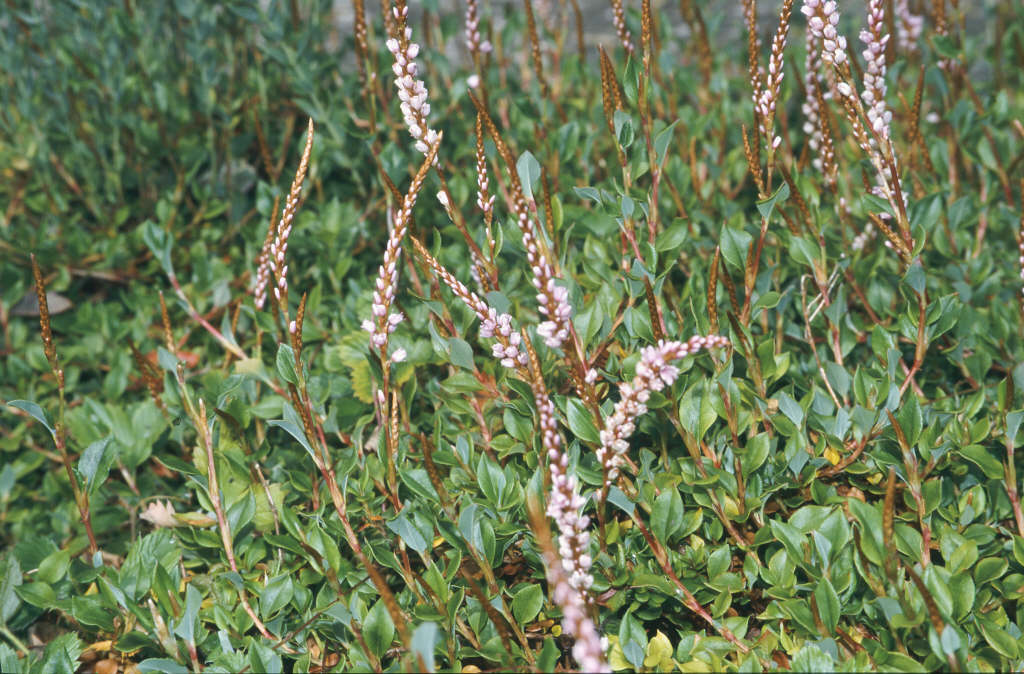Persicaria vacciniifolia

rock knotweed
A creeping perennial forming a wide mat of small, glossy ovate leaves which turn rusty-brown and persist through the winter. Slender spikes 6-8cm in length are packed with small pink flowers in late summer and early autumn

Buy this plant
Size
Ultimate height
0.1–0.5 metresTime to ultimate height
5–10 yearsUltimate spread
1–1.5 metresGrowing conditions
Moisture
Moist but well–drained, Poorly–drainedpH
Acid, Alkaline, NeutralColour & scent
| Stem | Flower | Foliage | Fruit | |
| Spring | Green | |||
|---|---|---|---|---|
| Summer | Pink | Green | ||
| Autumn | Pink | Brown | ||
| Winter | Brown |
Position
- Full sun
- Partial shade
Aspect
North–facing or East–facing or South–facing or West–facing
Exposure
Exposed or Sheltered Hardiness
H7Botanical details
- Family
- Polygonaceae
- Native to GB / Ireland
- No
- Foliage
- Semi evergreen
- Habit
- Matforming
- Genus
A genus of herbaceous, rhizomatous perennials with erect, unbranched stems, bearing short terminal spikes of small, white or pink, bell-shaped flowers
- Name status
Correct
- Plant range
- Himalaya
How to grow
Cultivation
Grow in any moist soil in full sun or partial shade See https://www.rhs.org.uk/plants/trials-awards for further information about RHS plant trials and awards
Propagation
Propagate by division in spring or autumn
Suggested planting locations and garden types
- Cottage and informal garden
- Rock garden
- Ground cover
- Flower borders and beds
Pruning
Cut back after flowering
Pests
Generally pest-free
Diseases
Generally disease-free
Get involved
The Royal Horticultural Society is the UK’s leading gardening charity. We aim to enrich everyone’s life through plants, and make the UK a greener and more beautiful place.